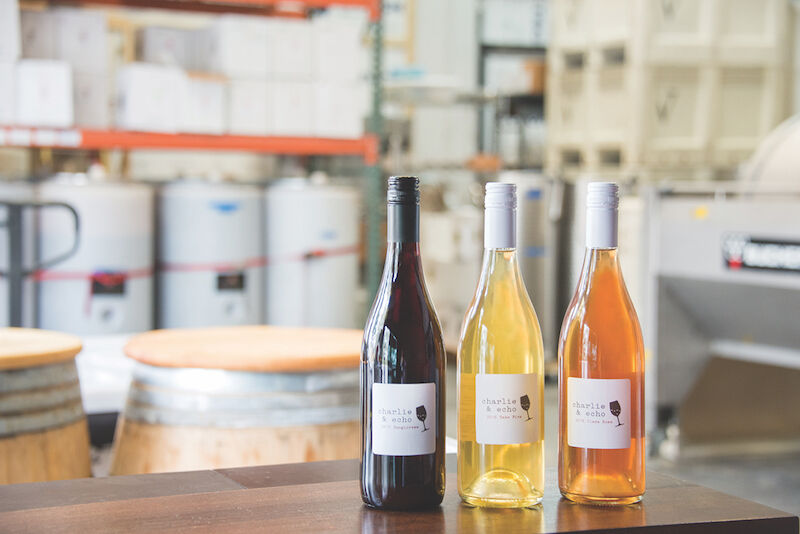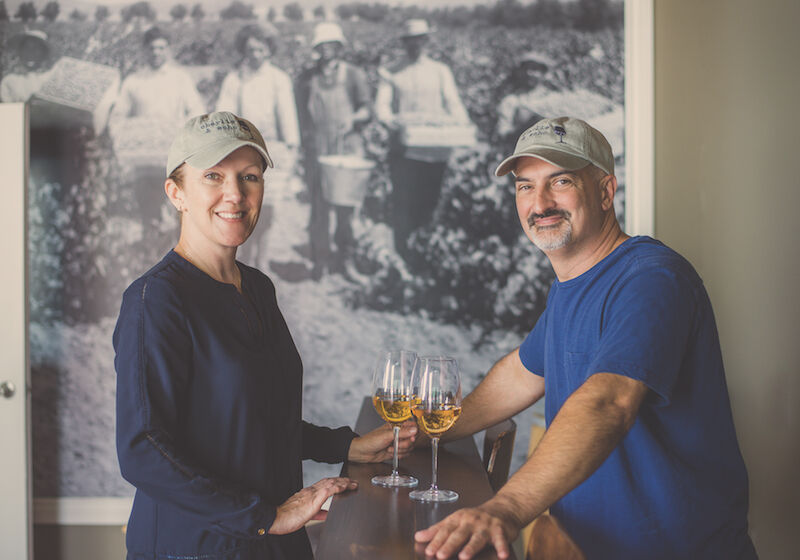Natural wines go against the status quo and challenge centuries-old beliefs of what the flavors, aromas, and colors of wine should be. This bold break from tradition is part of what makes natural wine one of the most popular styles in the world right now.
Winemakers Emily and Jody Towe from J. Brix Winery in Escondido say the philosophy behind natural wine is simple: “nothing added, nothing taken away.” The idea is that natural wine is a true expression of the grape and the land; the wine’s authenticity is maintained by intervening in the winemaking process as little as possible. The grapes are farmed using organic or biodynamic practices, the wines are fermented using only native yeasts and are not filtered, and little to no sulfur is added to the final product.
Eric Van Drunen, natural wine producer and co-owner of Miramar’s Charlie & Echo, likens the difference between the production of natural wine and conventional wine to the work of an artist versus that of a craftsman. Where conventional wine producers alter their product in various ways throughout the winemaking process so it fits a predefined set of expectations, natural wine producers allow their product’s variations to contribute to potentially unexpected results, much like an artist does.

Natural Wines – Charlie and Echo 2
PARTNER CONTENT
But whether or not this minimalist approach makes natural wine superior to conventional wine really comes down to preference. Though people often cite health benefits like the probiotics, lack of sulfites, and lower alcohol content, natural wine producers are more focused on the benefit of the artistry behind its production, rather than any specific health perks.
When it comes to taste, try to approach it with an open mind, because the differences in grapes, soil, and climate make each wine different. Some natural wine has a cloudy appearance and sour, yeasty flavors comparable to beer, while other natural wines look and taste just like conventional wines. The most common type of natural wine is orange wine, a white wine made using red winemaking techniques. Orange wines you may have seen are pét-nat, a sparkling wine that finishes fermenting in the bottle, and col fondo, a unique unfiltered Prosecco



















